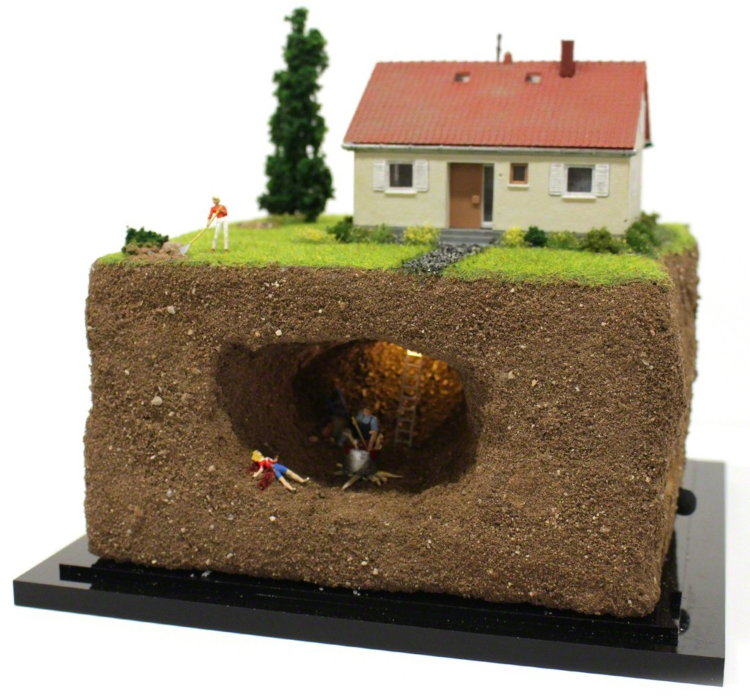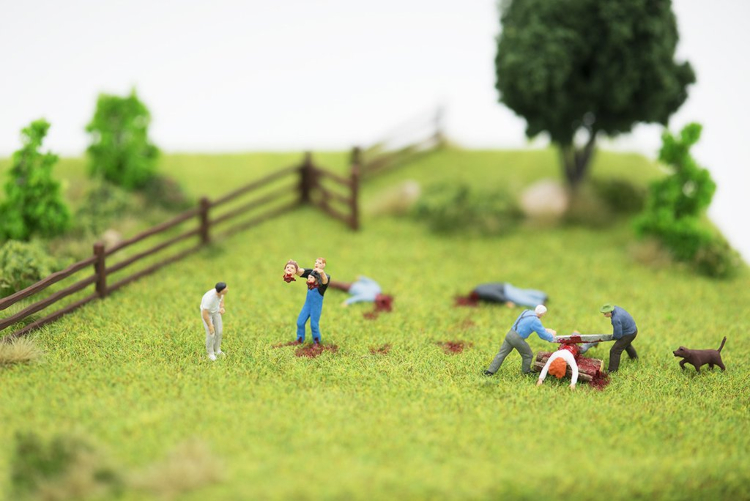Dieorama | The Amusing, Violent Little Worlds of Abigail Goldman
Kevin Staake’s documentary short, Dieorama, examines the morbid dioramas of artist Abigail Goldman. Through talking heads and exquisitely captured frames of her work, Goldman’s process and intention are realised, and discussions of violence, humour and art are explored.
By day, Abigail Goldman works as an investigator for the public defender office in Bellingham, Washington. By night, she crafts picturesque miniature worlds with idyllic scenes of life tinged with gore. As a young child, Goldman discovered a collection of archival crime photographs from the 20s and 30s. They invoked a fascination beyond their purely clinical depictions of violence. For Goldman, these grisly images harboured an engrossing narrative.

The grim realities she reproduces, from spousal murder to gun-wielding children, are not only beautiful, but also often farcical, shrouding them in a ghoulish humour. Goldman revels in the adverse effects of these contradictory elements, and describes the satisfaction of “giving unsuspecting viewers a little jolt”.
The adorable pieces, encased in plastic domes, entice you to peer in and take a closer look. Reminiscent of the toys and dollhouses we used to play with as children, this familiarity is soon perverted by the grotesque details in each diorama.
Violent images intrude almost every aspect of our lives, caught in the web of hyper-connectivity permitted by technological innovation. The depiction of violence in visual media and the news has become unrelenting. This continuous stream of violent imagery can desensitise us to the real violence they represent or capture.
Goldman’s dioramas reinvigorate how we confront such images, lulling the viewer into a false sense of security before unleashing their horror. Unlike the 2D screens that circulate most of the violent imagery we consume, the dioramas are 3D and take up their own physical space. Although we might be accustomed to onscreen violence, this tangibility demands a viewer interaction that is unfamiliar and confronting.

Goldman gleefully explains that the quickest part of the creative process is the final brushstrokes of red paint. In a few seconds, the works are transformed by the vivid gleams of blood that epitomise their effect. Goldman began to leave dioramas glued to various surfaces around her neighbourhood. She explains a “personal thrill” that comes with scaring or amusing people, “hopefully both of those things at once”. This sentiment encapsulates the complex effect of her work.
Goldman’s snapshots of beauty, violence and humour stand as both reminders of the horrors of this world and offer comic relief from its absurdity. Likewise, by encasing each diorama in a plastic dome, she creates a “contained violence” that suspends the moment in time as well as subduing the atrocity to a finite space.
In the last few minutes of the documentary, Abigail Goldman reflects upon the news of violence endured daily by the American people. She goes so far as to say that grotesque violence has “almost become our number one cultural export”. With this bleak reality in mind, artistic exploration of our response to violence becomes more and more important. For Goldman, dioramas are a way of “capturing…possessing…containing…confronting that reality”. Amongst the monotonous distribution of violent images, art such as Goldman’s dioramas both unsettle our normalisation of violence and serve as a tool to deal with its terror.
